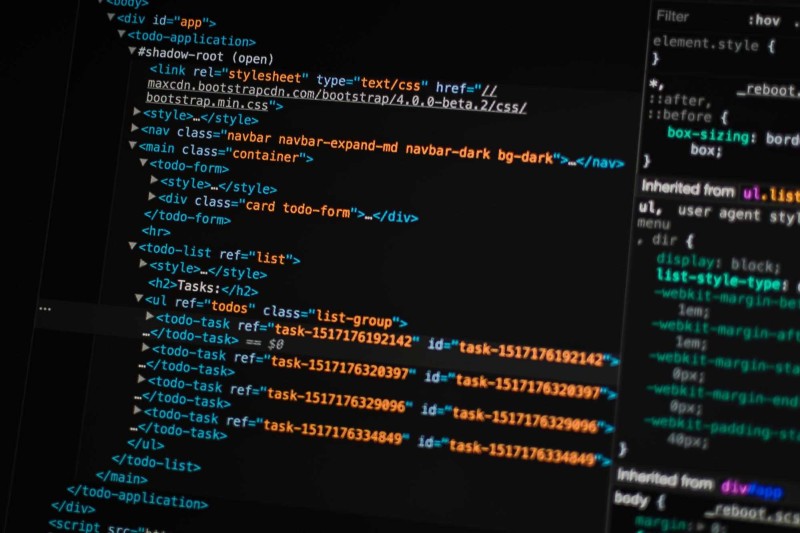Writing clean and efficient code is an essential skill every software developer should learn. It not only improves the readability and maintainability of your code but also makes troubleshooting and collaboration with teammates a breeze. In this article, we will discuss some best practices that can help you produce organized, readable, and maintainable code in any programming language. So let's dive right in!
Proper Naming and Functions
Choosing meaningful and consistent naming conventions is the first step toward clean code. By following these guidelines, your variable, function, and class names will be easy to understand and remember. Choose descriptive names that convey the purpose of the variable, function, or class, and avoid using single-letter names and abbreviations unless they are well known. Use lowerCamelCase for variables, UpperCamelCase for classes, and underscores for constants. When naming boolean variables, start with "is", "has", or "can" (e.g., isValid, hasPermission).
Breaking your code into small, single-purpose functions is a key element of clean and efficient coding. This approach makes your code more readable, reusable, and testable. Remember, a function should do one thing and do it well. Limit functions to 10-20 lines or fewer whenever possible and avoid the temptation to create "multi-tasking" functions.
Automated Testing and Documentation
Automated tests detect bugs and ensure that your code behaves as expected. Implementing secure coding practices and continuously monitoring for security vulnerabilities is crucial to prevent potential security breaches. In addition to unit testing, consider implementing application testing to check for security vulnerabilities in your code. Identify key behaviors or edge cases that require testing, create unit tests that cover individual functions and components, and use test-driven development (TDD) to write tests before your code.
Code comments are essential for maintaining your code's readability. They serve as a guide for anyone who reads or modifies your code. However, remember that too many comments can clutter your code, so use them judiciously. Write comments to explain complex or non-obvious sections of code and include a brief description of what each function does and its expected input/output or return values. Avoid writing comments that merely describe the code – leave that to the code itself.
The DRY (Don't Repeat Yourself) Principle
Eliminating repetitive code helps to maintain a clean and efficient codebase. This means:
- Reuse code instead of copying and pasting
- Write and use functions to encapsulate any logic that repeats itself
- Refactor your codebase periodically to remove redundant code snippets
Version Control and Style
Version control helps you keep track of changes and collaborate with teammates more effectively, while also allowing you to revert your codebase to an earlier state if needed. Practicing effective version control entails committing your changes frequently, writing meaningful commit messages that explain the changes made in each commit, and creating and using branches to isolate feature development and bug fixes.
Maintaining a consistent code style across your entire codebase makes it easier to read and understand. Many programming languages have recommended style guides you can follow, or you can create your own. Guidelines to consider include properly indenting your code and using whitespace to separate logical sections, ordering your function and class declarations consistently, and keeping your code width to 80 characters or fewer per line when possible.
Refactor and Review
Regular refactoring helps to keep your code clean, efficient, and easier to maintain. Effective refactoring strategies involve breaking down complex functions into simpler, more manageable parts, optimizing code for better performance and readability, and eliminating any redundant or unused code.
Code reviews are crucial for maintaining a high-quality codebase and fostering a culture of learning and improvement. Regular code reviews help to identify and rectify mistakes and inconsistencies while encouraging the sharing of knowledge between teammates. To make the most of code reviews establish a code review process and guidelines for your team, make time for thorough reviews, provide constructive feedback, and remain open to suggestions and be willing to learn from others.
Design Patterns and Dependencies
Design patterns provide tested solutions to common problems that arise during software development. Becoming familiar with design patterns in your programming language of choice can help you avoid reinventing the wheel when tackling complex challenges. To get started with design patterns, study popular design patterns in your programming language and understand the use cases and benefits of each pattern. Apply appropriate patterns in your codebase to solve specific problems.
Managing dependencies is an important aspect of maintaining clean and efficient code. Reducing the number of dependencies in your codebase can help to prevent potential conflicts and security risks, and improve maintainability. To minimize dependencies only include essential libraries and packages in your project. Periodically update your dependencies to the latest stable versions, analyze, and remove unused dependencies to reduce potential issues.
Conclusion
Following these strategies can set you on the path toward clean and efficient code. As you continue to improve your coding skills, always remember to prioritize your code's readability, maintainability, and overall efficiency. A disciplined approach to coding will serve you well throughout your software development career and make collaborating with others a more enjoyable, productive experience. Happy coding!
